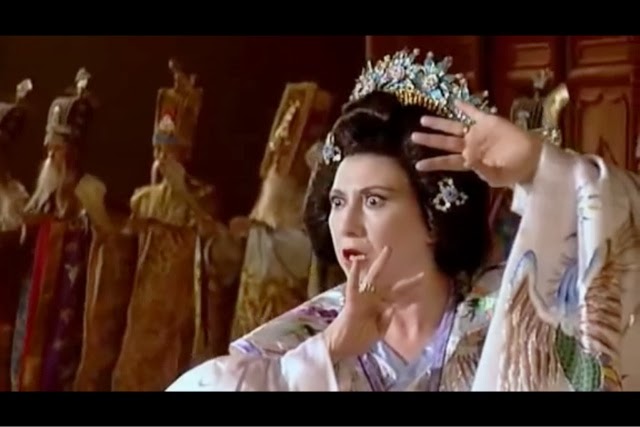Turandot by Giacomo Puccini
I've been a fan of "Nessun Dorma" — be it the rendition by the great tenor Luciano Pavarotti, or by British Got Talent finalist Paul Potts. But not since last week I learn a lot about the opera "Turandot", to which the aria belongs to.
Puccini composed the music for Turandot to a libretto written by Giuseppe Adami and Renato Simoni, but died in 1924 before finishing this masterpiece. With the help of Franco Alfano, Turandot was completed in 1926 and performed for the very first time in Teatro alla Scala in Milan, Italy.
The plot is set in China, telling the story about Prince Calàf from foreign land who falls in love with a very beautiful yet icy cold-hearted Princess Turandot, daughter of Emperor of China, Altoum. Any suitor of the princess must be of royal blood and answer three riddles; any wrong answer will lead to beheading. Prince Calàf passes the test as unknown stranger but Turandot still refuses to marry him. Later he offers her a way out, if she can find out his name before the next dawn, he will accept the death penalty.
Youtube is a great source for art performance videos so actually it's not that shocking that I can found the video of the performance of Turandot.
Several videos of the performance are available in this google-owned service. In particular I love the one performed in the Forbidden City, Beijing.
First, because the setting of the opera is Pekino, italian for Peking which in Wade-Giles is written as Beijing, the capital of China.
Second, the Chinese government had banned the performance of the opera because the thought it pictured China in a rather negative way — but in 1998 they relented and allowed the performance in the very heart of Beijing.
Third, this version is performed by a collaboration of world-renowned conductor, musicians, opera singers, stage director, choir master, choir singers, and other talents.
Fourth, the scenes are acted in more symbolical and less realist way and in the same time incorporating many chinese performance art elements to make the opera closer to the root.











Comments